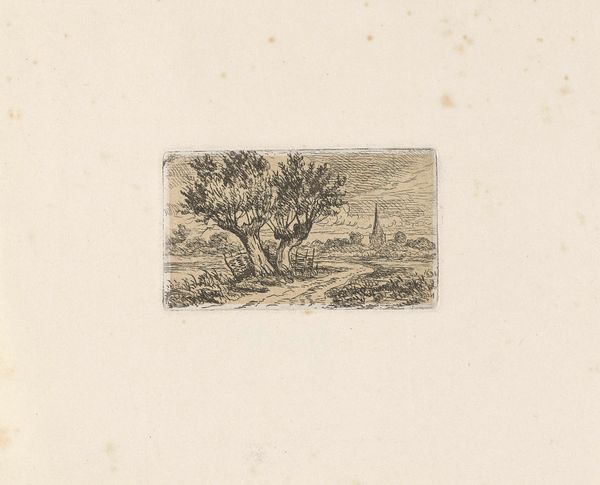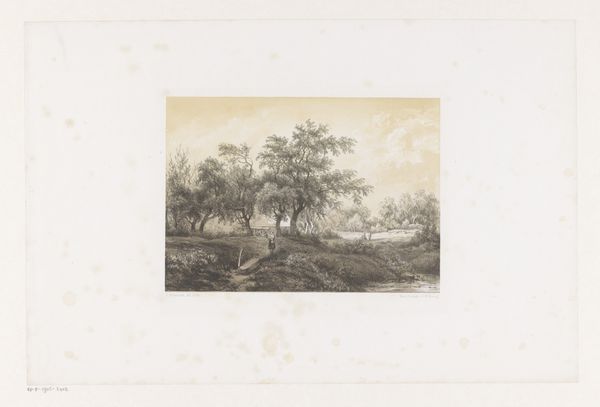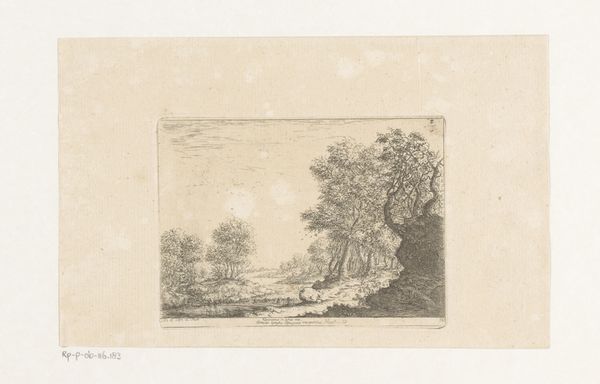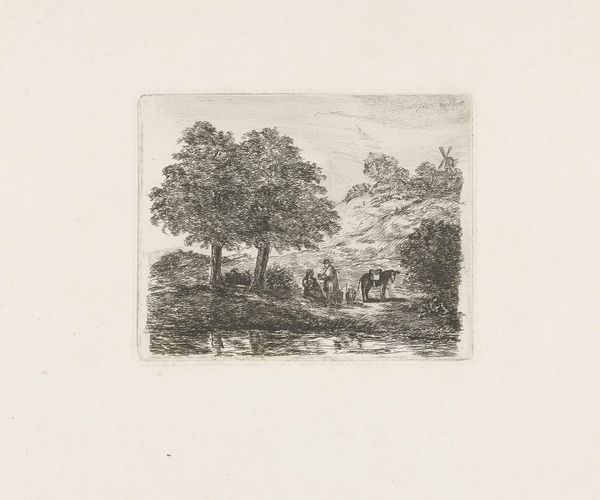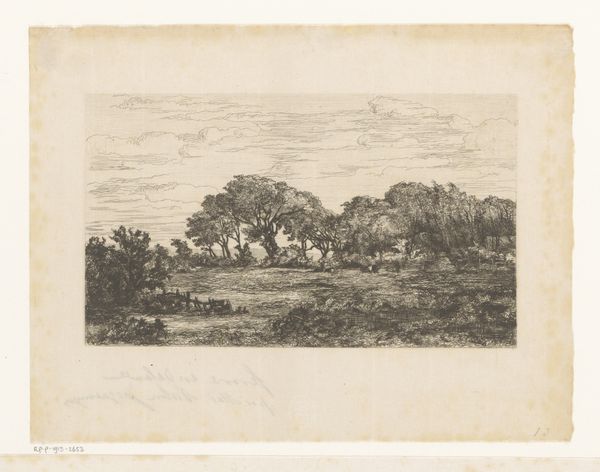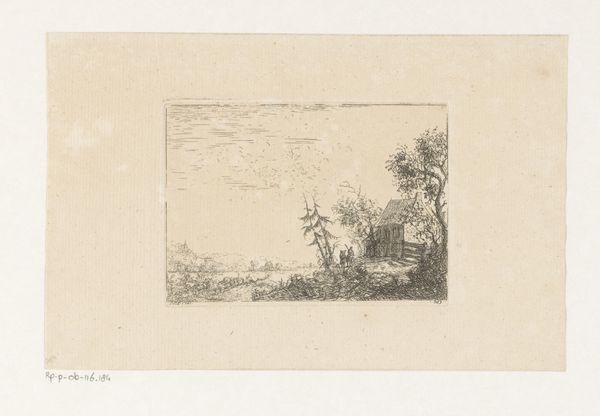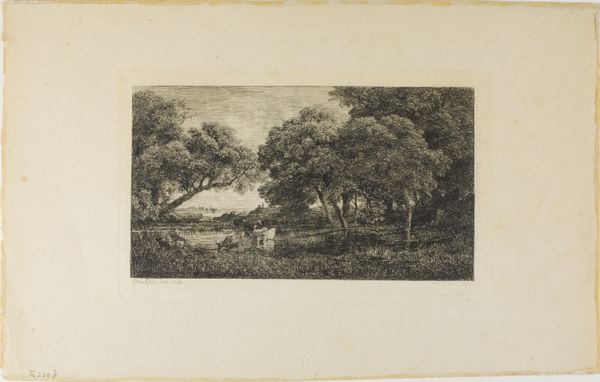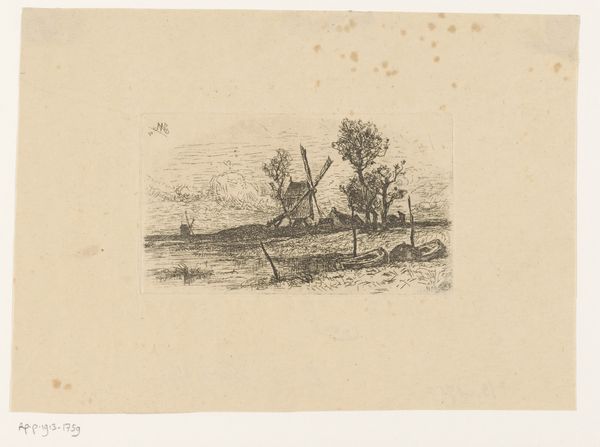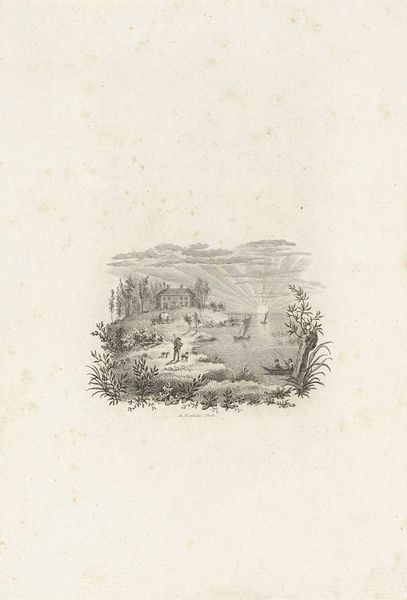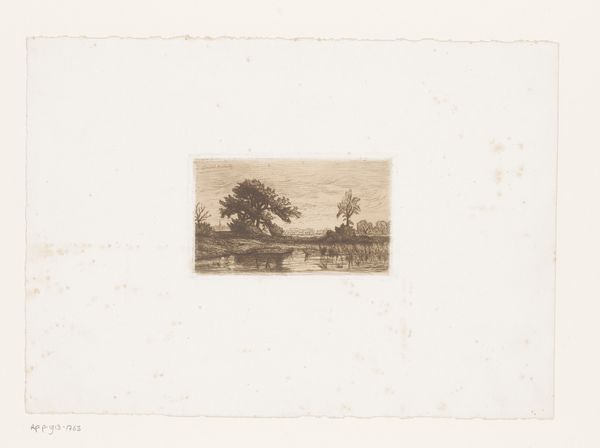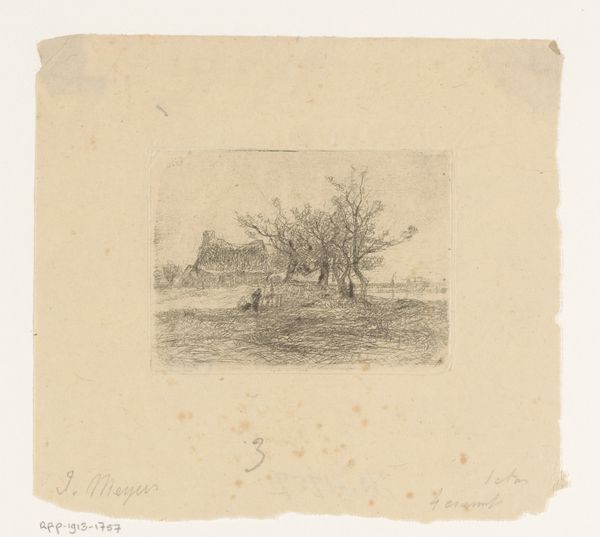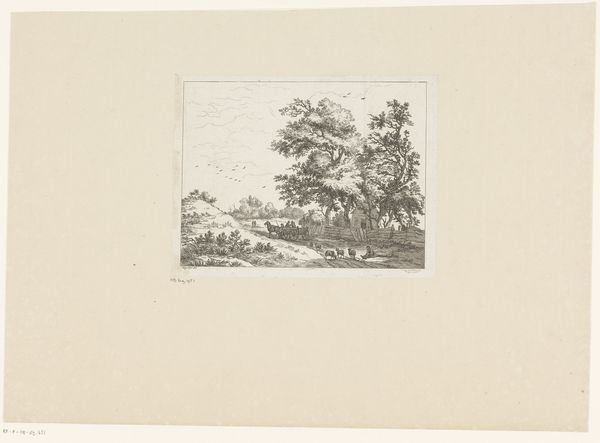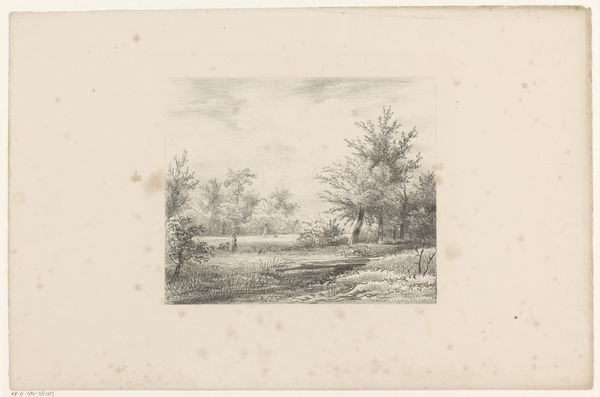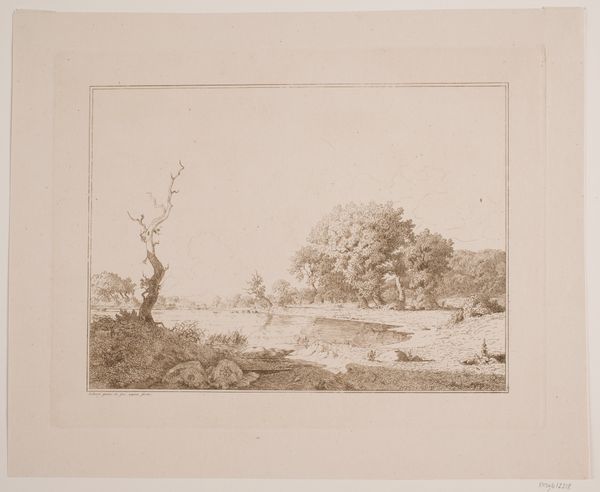
print, etching
# print
#
impressionism
#
etching
#
landscape
#
realism
Dimensions: 82 mm (height) x 147 mm (width) (bladmål)
Curator: This etching, crafted in 1885 by Louise Ravn-Hansen, offers a compelling view of "Piletræer på et gærde," or "Willow Trees on a Fence." It's currently held in the collection of the SMK, the Statens Museum for Kunst. Editor: My first thought? Quiet. It feels incredibly still, like a secret whispered by the wind through those willows. I'm immediately drawn to the aloneness of that tree on the right. Curator: It's fascinating how Ravn-Hansen uses the impressionistic style within this landscape. Consider the socio-political context; the late 19th century saw increasing industrialization pushing against agrarian life, an idealized simplicity. Editor: Right. And the lone tree might speak to a kind of resilience or even defiance against the landscape around it? Like, here I stand! And that roughness is compelling, too. It's not cleaned-up realism. There's a vulnerability to the line work, as if we are glimpsing a private moment between the artist and nature. Curator: Precisely. Ravn-Hansen's position as a female artist also gives us a unique vantage point. Landscapes at this time were heavily coded masculine; think of grand vistas and conquest. But her landscape is intimate, personal, and maybe even subtly challenging those patriarchal norms. Editor: Oh, I love that! I imagine her sketching it from just beyond that fence, feeling the sun, listening to the sounds, etching that onto the plate later... almost as though she wants us to touch the same thing she touched. You almost can hear that soft sczz sound of the stylus scraping at the surface of the printing plate, in her studio. Curator: Considering feminist interpretations, one could view the grouping of trees as representing community and shared experience, with the solitary tree perhaps indicating both independence and the potential for isolation experienced by women. Editor: Hmm... Maybe it also suggests that our personal narratives are often framed within wider power structures, those ‘fences’, both restricting and delineating space... it just gives us so much to consider and look at. It's a humble composition at first glance but truly rewards closer engagement. Curator: Agreed. Ultimately, this etching beautifully reflects the period's changing attitudes towards nature and gender, offering valuable insights into art's social function. Editor: A tiny slice of forever etched on paper. I could get lost in those trees.
Comments
No comments
Be the first to comment and join the conversation on the ultimate creative platform.
